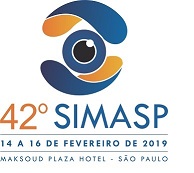Dados do Trabalho
Título
Toxicity Test With MEK inhibitor in (fli:GFP) Casper Zebrafish Embryos
Introdução
MEK1/2 are members of the RAS/RAF/MEK/ERK signaling pathway, and inhibition of MEK might result in decrease pathway activation in N-RAS and B-RAF mutant melanomas. New mutations in N-RAS and MEK were identified as escape mechanisms through which B-RAF mutant melanomas acquire resistance to B-RAF inhibitors (Greger et al., 2012). MEK inhibitor treatment is being tested in phase II and III clinical trials of metastatic cutaneous melanoma. In a recent study, the effect of a MEK1/2 inhibitor MEK162 (Novartis) in patient-derived melanoma cell cultures was robust apoptosis with potent suppression of cell proliferation (Thumar et al., 2014). Our group evaluated the effect of MEK162 on three conjunctival melanoma cell lines (CRMM1, CRMM2 and CM2005.1) and found that it inhibited growth of all cell lines in a dose-dependent manner (Cao et al., 2016). The zebrafish model has been used widely in research because of its several advantages and recently we established (fli:GFP) Casper zebrafish embryos as an animal model to human conjunctival melanoma (Pontes et al. 2017). As MEK162 was found to be effective in vitro, our goal with this experiment was to evaluate the toxicity of different concentrations of this MEK inhibitor in (fli:GFP) Casper zebrafish embryos.
Métodos
For the toxicity test, 1mL of drug-containing egg water was put into the wells of a 24-well plate. DMSO was the control. We used 1uM, 1,5uM, 2uM and 2,5uM of MEK162 diluted in egg water. Six non-injected 3-dpf (days post fertilization) (fli:GFP) Casper zebrafish embryos were placed in each well, maintained at 34ºC and observed daily until 8 dpf, after 5 days treatment with MEK162. The drugs were refreshed every 2 days and all experiments were performed in triplicate. A drug concentration was considered nontoxic when survival was equal or higher than 80%.
Resultados
The toxicity test resulted in more than 80% survival of embryos at all MEK162 concentrations through 8 dpf (Fig. 1). When the MEK162 concentration was 1uM, survival was 94% at 7dpf and 8dpf. At a 1.5uM concentration, survival was 94% at 4dpf and 5dpf and 83% at 6dpf, 7dpf and 8dpf, while at a concentration of 2.5uM MEK162, survival was 88% at 6dpf and 7dpf, and 83% at 8dpf.
Conclusões
The results showed that MEK162 was safe as a tumor inhibitor to be used in (fli:GFP) Casper zebrafish embryos until at least 8dpf at 2.5uM concentration.
Palavras Chave
Conjunctival melanoma, ocular neoplasm, animal model, MEK162.
Arquivos
Área
Miscelânea
Instituições
Leiden University Medical Center - LUMC - - Netherlands
Autores
Kelly Cristine de Sousa Pontes, Arwin Groenewoud, Jinfeng Cao, Ewa Snaar-Jagalska, Martine J Jager
